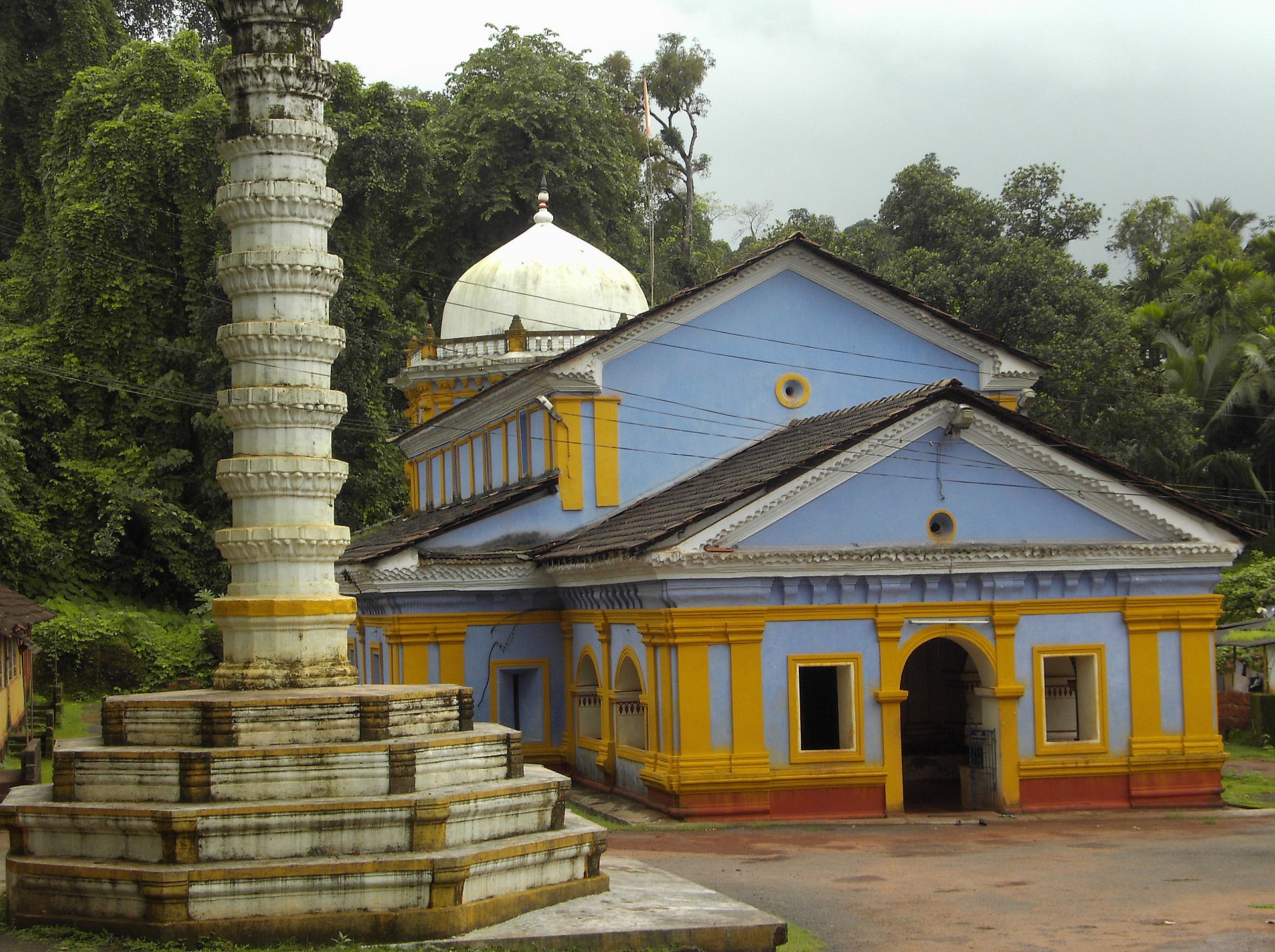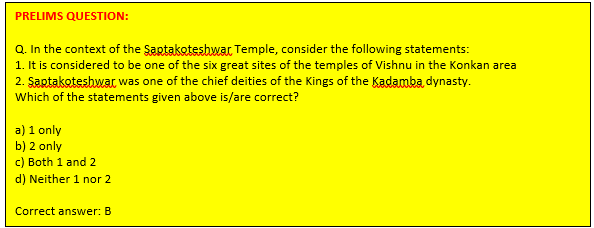SHREE SAPTAKOTESHWAR DEVASTHAN

Copyright infringement not intended
Context: The Prime Minister, Shri Narendra Modi has expressed happiness over renovation of Shree Saptakoteshwar Devasthan, Narve, Bicholim in Goa.
Details:
- The Saptakoteshwar temple at Narve in Goa, India, is considered to be one of the six great sites of temples of Shiva in the Konkan area.
History:
- Saptakoteshwar, a form of Shiva, was one of the chief deities of the Kings of the Kadamba dynasty around the twelfth century.
- The temple was built by the King for his wife Kamaldevi who was a staunch devotee of this god.
- The Kadamba kings proudly used the title (Birudu) Shree Saptakotisha Ladbha Varaveera.
- The gold coins discovered at Chandor, Goa, Gopikapatna and other places of the kings Jayakeshi I, Jayakeshi II, Jayakeshi III, Shivachitta Paramadideva, Soideva, etc., have inscriptions reading: Saptakotishvaralabdha – Varaprasada which means "with the grace of Lord Saptakotishwara", the family deity of Kadambas.
- These coins were often referred to as Saptakotisha-Gadyanakas.
- The temple was dug up In 1352, when the Kadamba kingdom was conquered by the Bahmani Sultan Allauddin Hasan Gangu.
- In 1367, the army of Vijayanagar King Harihararaya defeated the Bahmani Sultan's troops in Goa and managed to restore most of the temples to their former glory including that of Saptakoteshwar.
- The temple was demolished in 1560 by the Portuguese
- The construction of the new site was carried out by Shri Shivaram Desai (president of the sansthan) on Chatrapati Shivaji Maharaj's blessings and guidance.
Architecture:
- With its shallow Moghul dome mounted on an octagonal drum sloping tiled roofs, European style Mandapa, or assembly hall and tall lamp tower or Deepastamba, the temple is situated in an archaeologically important area.
- The surroundings of the temple are tinged with several Brahminical laterite and stone caves.
- In the vicinity of it existed a Jain Math, the ruins of which are still visible. It was probably an important Jain temple patronised by the Kadamba rulers before they changed loyalty to Sri Saptakotishwar.
- In front of the temple towards the right side of the Deepastamba is a shrine of Kalbhairav and outside it are seen the padukas of Dattatraya carved on the stone.
- Behind the temple are carved stone walls with niches.
- Near the temple site there is a sacred tank known as Panchaganga Tirtha which is used for ablutions by devotees on the birthday of Lord Shiva.




.jpeg)


1.png)
